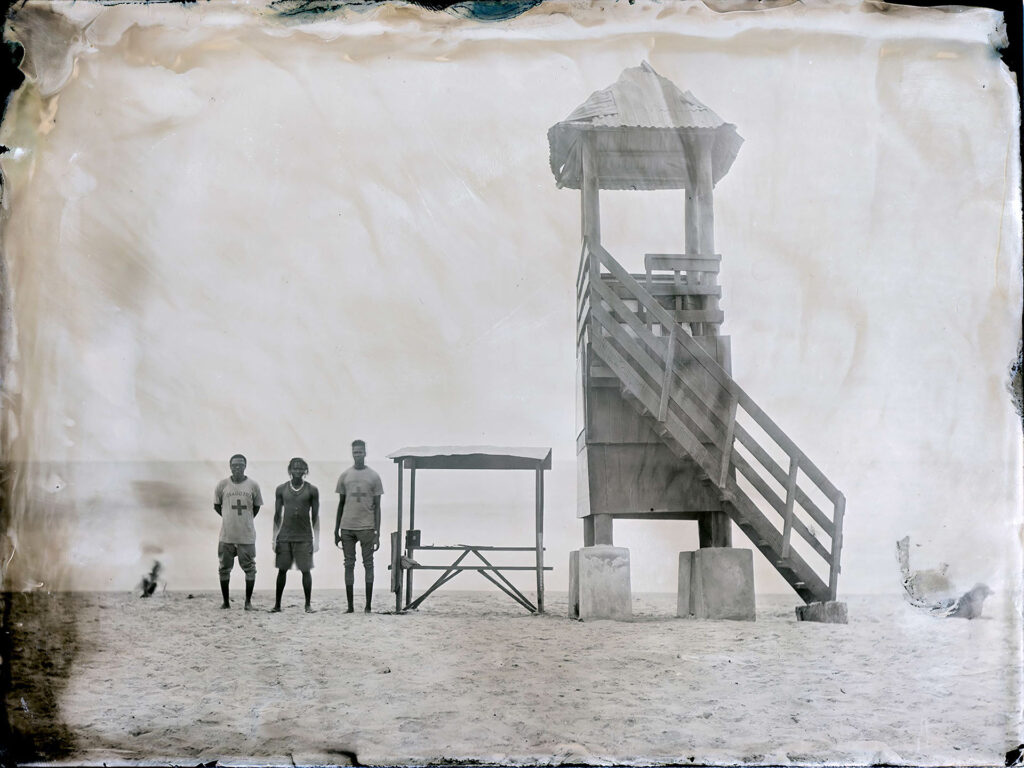1120km, Gambia River
1120km, Gambia River

Today, April 1, 2019, a plethora of travel photographs have been taken, with the day being no different from any other during the year in this regard. These photos will flood social media, some of them will die forever on computer disks, and others will be published in travel magazines after careful editing. And until about 167 years ago, travel photography was so difficult and required so much knowledge and patience that it was rare. Difficult to imagine from the point of view of today’s globetrotter.
There was an incredible delight in showing the foreign world by photographers who toured exotic countries with the new technology invented and developed by Frederick Scott Archer in the 1850s. The hunger for images from this part of the world led to an increase in the frequency of middle-class trips to African countries. High temperatures were not a hindrance; the first photographers bravely traveled along the Nile by ship, with their own darkroom and sometimes a hen, used to obtain protein for albumen prints.
Marcin Andrzejewski also had to contend with high temperatures and hard-to-reach places, traveling along the Gambia River. Nowadays, technology is so developed that some of the hardships of the first travelers-photographers manage to offset. But then as now, travel is all about meeting people, talking to them, watching what they do. The places where the locals live are profoundly different to us, and this has invariably interested generations of photographers who wonder how to depict what they see and experience so that it is closest to the truth. Martin chose to photograph slowly, in the style of the pioneers of travel photography, using the wet collodion technique. He chose this cumbersome way so as not to steal in fractions of a second what takes a long time to play out in front of the lens. His, as well as my, fascination with The Gambia is the desire to unhurriedly absorb what is happening at the pace of its people. In The Gambia we will meet 12 different tribes, each with an unusual and intricate past, and the present is not spared their pitfalls and disappointments. All of this translates into images that show different parts of this beautiful country, not necessarily fitting together at first glance, but as a whole they create a story that in the tourist tumble, on the spot, we are not able to see. In the photographs, we rarely meet people, while those we see, the author has met and told about himself as well as his enterprise. These are conscious creations in front of the lens. These photos are very different from those of the mid-19th century.The faces of the people in the old photos are sad, usually the protagonists were forced to pose. Perhaps photography was so foreign to them that they feared its unknown, spiritual dimension. Today, in the age of the selfie, there is no such atmosphere of uncertainty; there is fun, cooperation and mutual trust.
Andrzejewski doesn’t move around like most modern tourists in an air-conditioned bus, but like everyone else he protects himself from the scorching rays of the African sun in various improvised ways, drenched in sweat, but smiling as he participates in the daily celebration of Gambian life. It works like the 1870s Alfred Noack, whose old stencil landscape photographs became a model for capturing places for years to come. It is a very strong reference to the tradition of photography, even a form of homage to the achievements of the pioneers of photography. In the photos, we see the Gambians’ important places by the water, their beautiful boats in which they go out to catch fish. Farmers and animals that are carefully watched over, like members of the family, and people enjoy singing and dancing. I believe Marcin Andrzejewski will succeed in creating an unforgettable and unique picture of The Gambia that captures the uniqueness of this African country.
Marek Poźniak



